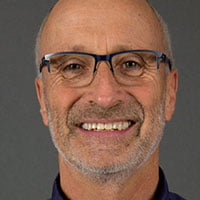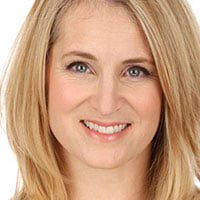Setting up Camp
Posted By Clive Whittingham On 14-10-2016 @ 1:22 pm In Features | Comments Disabled

Camp Zambia involves the filming of a wide variety of species and behaviours
A joint venture between Blue Ant Media, Smithsonian Channel and Plimsoll Productions is changing the way blue-chip wildlife series are made, reports Clive Whittingham.
High-end wildlife programming has traditionally been the domain of the public broadcasters, for fairly obvious reasons.
Series like the BBC’s Blue Planet require painstaking filmmaking, often over several years, and with that comes costs that won’t be tolerated by a commercial broadcaster without the same public service commitments to educate its audience.
But times are changing. Sky in the UK has teamed up with Atlantic Productions on 3D projects with David Attenborough such as Galapagos, while Netflix has swallowed the costs and timescale of Our Planet [1], which is due to hit subscribers’ screens in 2019.
Innovative methods are being adopted to bring the cost of blue-chip wildlife programming down, perhaps most notably with the Camp Zambia joint venture between Canadian broadcaster, producer and distributor Blue Ant Media, US channel Smithsonian and UK outfit Plimsoll Productions.

Andrew Jackson
Plimsoll was launched in 2013 [2] in Bristol – something of a hotbed of wildlife filmmaking and home to the BBC’s Natural History Unit – by former Zodiak USA CEO Grant Mansfield. In 2014 it hired former Discovery and BBC wildlife specialist Andrew Jackson [3] and his idea to completely turn the natural history pitching process on its head has resulted in the Camp Zambia project.
“Traditionally, in a natural history pitch you go in and specify the animal you’re going to focus on and the behaviour you wish to capture,” Jackson says. “You know the behaviour happens, but you don’t know when it will happen, so you go out there and the cameraman lives on the sniff of an oily rag for six months and prays that he sees the behaviour. Eventually you do, but probably after about 12 weeks and 99% of your time and footage is wasted.
“We wanted to learn lessons from the factual entertainment producers we have here at Plimsoll who will go to a hospital, film for six months and come away with a host of wonderful stories.”
The plan was to find a location rich in a variety of species and essentially film everything, rather than one species or one behaviour. The footage is then cut together with whatever character-led stories emerge.
It means large amounts of footage – the commission from Blue Ant and Smithsonian is for 50 hours – can be shot in a much shorter period of time, with the initial order for the Camp Zambia project being over two years. The Zambia location was known to be perfect for such a model by Dr Martha Holmes, a former series producer at the BBC Natural History Unit and now head of wildlife and executive producer at Plimsoll.
Series producer James Smith says: “The USP of the project is to go and film everything that moves and then construct narrative around the assets we gather. So it’s the opposite of normal natural history filmmaking, which is to go out and get a specific behaviour and spend hundreds of thousands of pounds chasing polar bears through the Arctic, or lions and hyenas through Zambia but only with one focus.
“We do want the lions and other A-list predators, but we also film the birds, reptiles, insects and everything else that comes our way. It’s an effective and cost-effective way of making films.

Vanessa Case
“People assume natural history should be expensive and take years to make, and it still will for the big primetime BBC1 things, but it doesn’t mean all natural history has to be made that way. Films made on a cheaper model don’t have to be low-quality. We’re shooting in 4K and we’ve got 2,500 hours of rushes already. The key is to have a presence all the time.”
Jackson says he would been toying with the idea for a while but it was Vanessa Case, exec VP of content at Blue Ant, who took a “leap of faith” and commissioned Camp Zambia, despite the lack of a narrative arc or treatment, following a meeting at Wildscreen.
“It was a big leap of faith that Plimsoll and Blue Ant made together,” she explains. “The belief it would work is founded on the expertise of Andrew Jackson, Martha Holmes and the people at Plimsoll who have years of experience in different places.
“When Blue Ant launched Love Nature as an international SVoD offering, the aggressive directive right out of the gate was to produce a tonne of unique content in 4K. We couldn’t tackle that demand with short-run series or one-offs.
“We took a chance knowing Plimsoll could execute and sent them there without specifying X amount of hours on this behaviour, X amount of hours on this animal. We wanted to give them more freedom to capture what truly turned out to be the best 4K blue-chip wildlife content they could.”
There’s also a keen eye being kept on the growing virtual reality trend, with natural history filmmaking traditionally at the forefront of new technology in cameras and filming techniques.
“Everybody wants it but nobody knows how to fund it yet,” Jackson says. “People feel as though they got burned with 3D; natural history went there very quickly and realised nobody wanted it. VR has come along and everybody is wondering if it will be another 3D. Do we want to waste money on it?
“It’s getting a lot of attention and it won’t be long before an app with some VR is a prerequisite for everybody. Natural history is brilliant for it. I did it for Shark Week at Discovery and we had a huge number of people downloading the app.”
For now, though, Jackson’s desire is to roll out his new filming method in different locations around the world with enough species of animal to support the format. Sri Lanka and Borneo are being explored.
“We’re so confident in the model now. We’ve got it honed down to a T where at the hottest part of the year the teams are tag-teaming and filming for 24 hours, we’re using night-vision, military-grade thermal cameras and we’re able to follow our characters night and day,” he says.
Smith adds: “We’ve got some behaviours that have either never been seen before or have only been seen once or twice. We’ve managed to do it on an extraordinarily limited budget compared to the BBC; it looks like something they would have spent hundreds of thousands on.
“We’ve rewritten the way you do natural history and a lot of people here in Bristol have been keeping an eye on what we’re doing.”
Article printed from C21Media: https://www.c21media.net
URL to article: https://www.c21media.net/setting-up-camp/
URLs in this post:
[1] timescale of Our Planet: https://www.c21media.net/netflix-to-explore-our-planet/
[2] launched in 2013: https://www.c21media.net/ex-zodiak-us-boss-debuts-uk-prodco/
[3] Andrew Jackson: https://www.c21media.net/jackson-resurfaces-at-plimsoll/
[4] Image: https://www.zodiakrights.com/content/show/1127196
Click here to print.